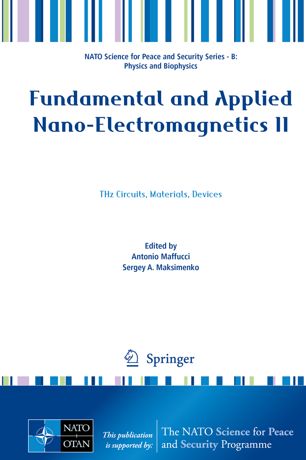

Most ebook files are in PDF format, so you can easily read them using various software such as Foxit Reader or directly on the Google Chrome browser.
Some ebook files are released by publishers in other formats such as .awz, .mobi, .epub, .fb2, etc. You may need to install specific software to read these formats on mobile/PC, such as Calibre.
Please read the tutorial at this link: https://ebookbell.com/faq
We offer FREE conversion to the popular formats you request; however, this may take some time. Therefore, right after payment, please email us, and we will try to provide the service as quickly as possible.
For some exceptional file formats or broken links (if any), please refrain from opening any disputes. Instead, email us first, and we will try to assist within a maximum of 6 hours.
EbookBell Team

4.7
96 reviewsThe increasing prevalence of nanotechnologies has led to the birth of “nanoelectromagnetics,” a novel applied science related to the interaction of electromagnetic radiation with quantum mechanical low-dimensional systems.
This book provides an overview of the latest advances in nanoelectromagnetics, and presents contributions from an interdisciplinary community of scientists and technologists involved in this research topic. The aspects covered here range from the synthesis of nanostructures and nanocomposites to their characterization, and from the design of devices and systems to their fabrication. The book also focuses on the novel frontier of terahertz technology, which has been expanded by the impressive strides made in nanotechnology, and presents a comprehensive overview of the:
- synthesis of various nanostructured materials;
- study of their electrical and optical properties;
- use of nano-sized elements and nanostructures as building blocks for devices;- design and fabrication of nanotechnology devices operating in the THz, IR and optical range.
The book introduces the reader to materials like nanocomposites, graphene nanoplatelets, carbon nanotubes, metal nanotubes, and silicon nanostructures; to devices like photonic crystals, microcavities, antennas, and interconnects; and to applications like sensing and imaging, with a special emphasis on the THz frequency range.